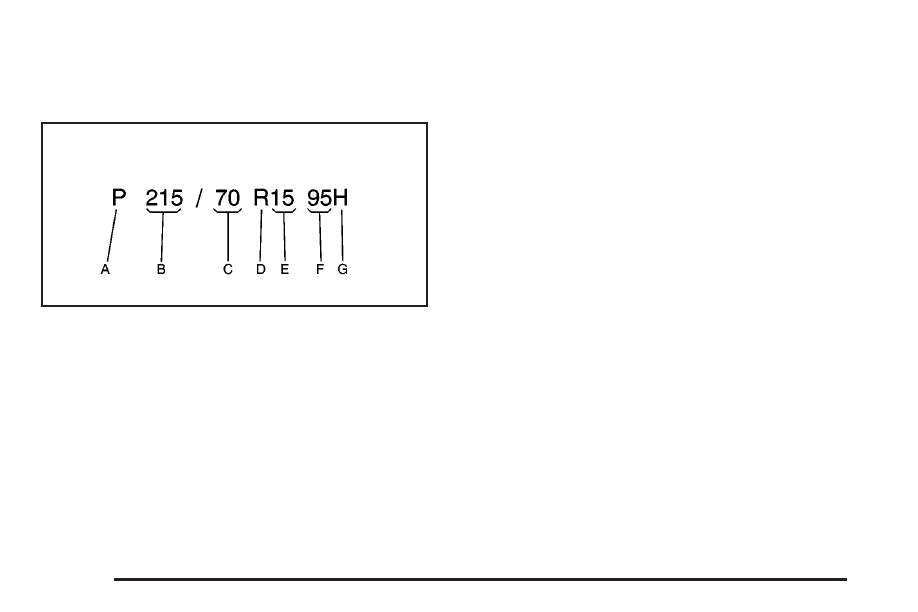Tire size – Pontiac 2004 Vibe User Manual
Page 274

Tire Size
The following illustration shows an example of a typical
passenger car tire size.
A. Passenger (P-Metric) Tire
B. Tire Width
C. Aspect Ratio
D. Belt Rating
E. Rim Diameter
F. Load Range
G. Speed Rating
Passenger (P-Metric) Tire: The United States version
of a metric tire sizing system. The letter “P” as the
first character in the tire size means a passenger vehicle
tire engineered to standards set by the U. S. Tire and
Rim Association.
Tire Width: The three-digit number indicates the tire
section width in millimeters from sidewall to sidewall.
Aspect Ratio: A two-digit number that indicates the tire
height-to-width measurements. For example, if the
tire size aspect ratio is “70,” as shown in item “C” of the
illustration, it would mean that the tire’s sidewall is
70% as high as it is wide.
Belt Rating: A letter code is used to indicate the type
of ply construction in the tire. The letter “R” means
radial ply construction; the letter “D” means diagonal or
bias ply construction; and the letter “B” means
belted-bias ply construction.
Rim Diameter: Diameter of the wheel in inches.
Load Range: The load range represents the load carry
capacity a tire is certified to carry.
Speed Rating: The maximum speed that a tire
is certified to carry a load. Speed ratings range
from “A” to “Z”.
5-64